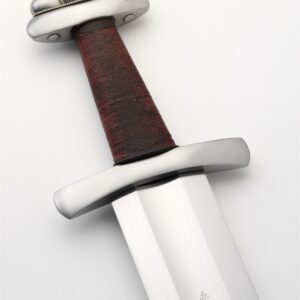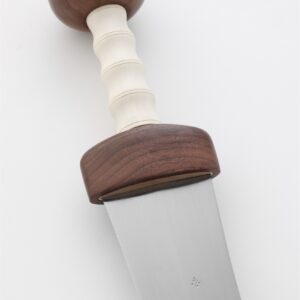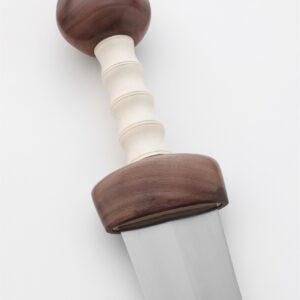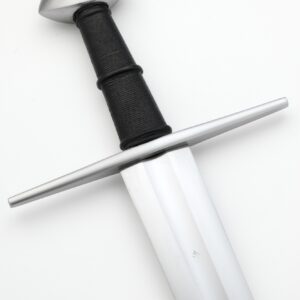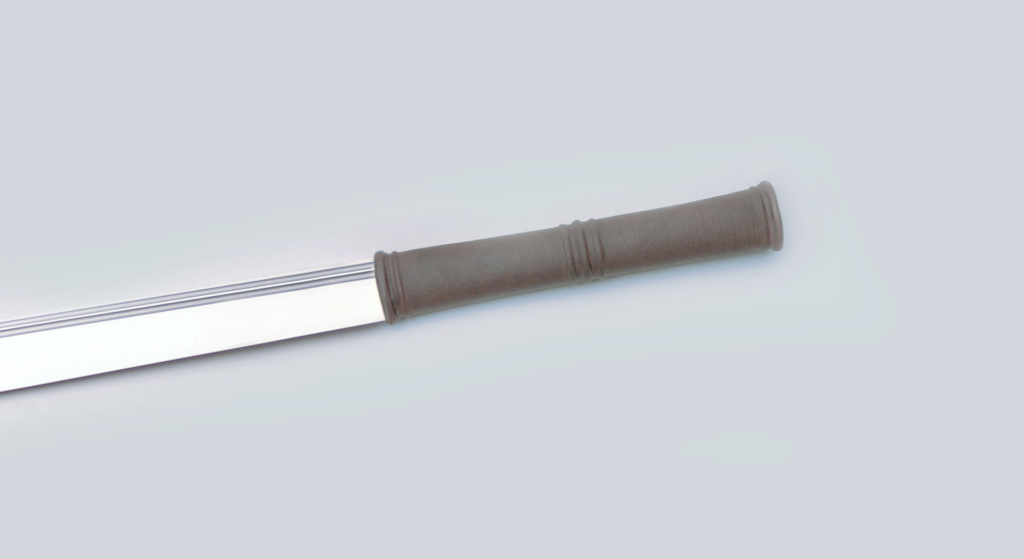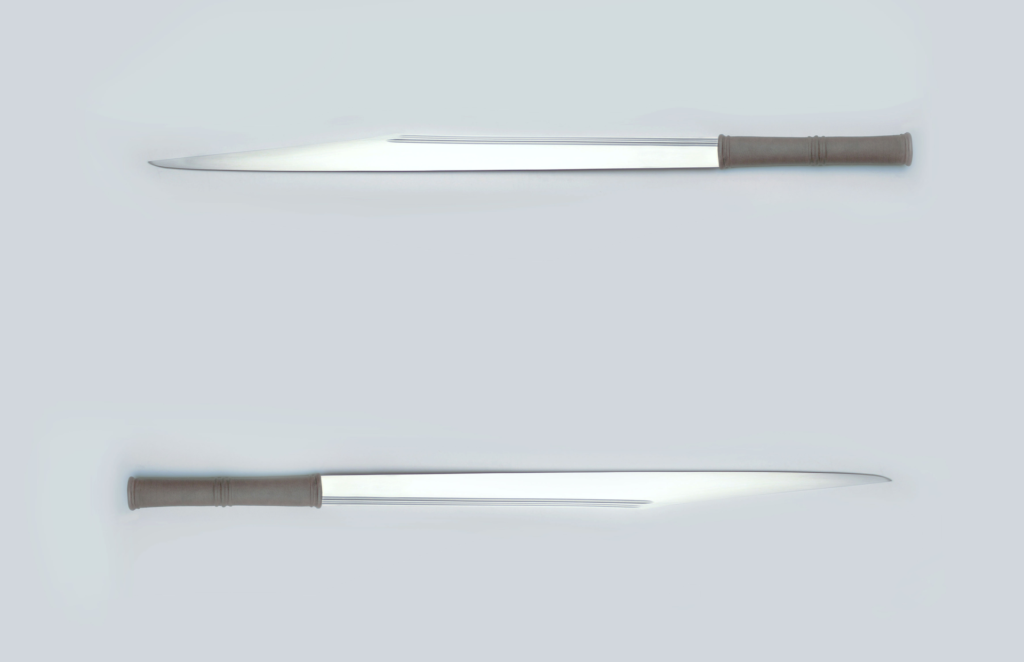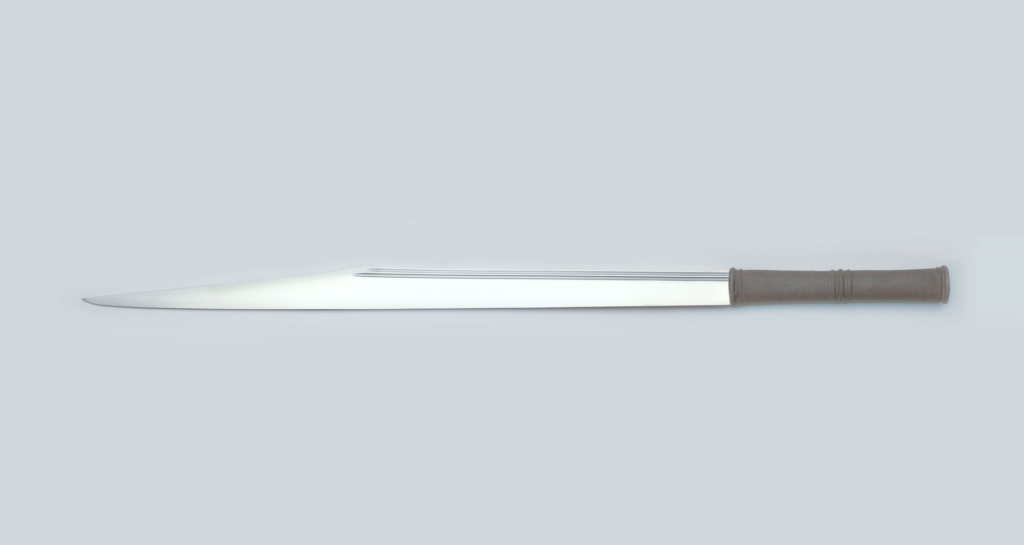(seax)
Broken Back Seax
The Little Bealings seax is based on documentation of an original weapon of outstanding quality. It is not one of the more famous examples of the period, since it lacks the decorative splendor that some of its contemporary siblings proudly display. But what it may lack in superficial glory it more than makes up for in physical presence and graceful lines.
The classic look with its broken back and long drawn out point is instantly recognizable. That outline is so iconic that we today often mistakenly understand it to be the defining feature for all seaxes. In reality, the broken back form developed only towards the very end of the time period when seaxes were in use (11th C) and was mostly popular in Britain, where instead on the continent seaxes had already started to become less popular and common sidearms for civilians and warriors.
Broken back seaxes were made in many different sizes. The ones intended for use as weapons can be classified in at least two major groups. A shorter type that in outline and proportions have much in common with the large clip point Bowie knives of the 19th C and a longer version that came close to being full sized swords. The Little Bealings seax belongs to the latter group. Large seaxes such as this could be carried instead of or alongside with swords as secondary weapons to the spear or lance. Artwork show that the longest seaxes were not carried across the front of the body as some of the shorter seaxes might have been, but at the hip, with the point at an angle towards the ground.
Just like the sword the large seax was typically used together with a shield. With its blade length of 67 cm the Little Bealings seax comes close to the length of the double edged swords of the period. At its greatest width of 4.5 cm the back is 7 mm thick. The cross section is a stout triangle with slightly bulging sides. This makes for a blade with imposing presence and powerful cutting potential. The point is narrow but reinforced by the thick back. The Little Bealings is not unique with these dimensions. Large sword sized seax blades were made to have a different heft and balance than swords. From this we may assume that the fighting style with the seax could have been different than with the double edged sword, or that it simply specialized or made a priority of some of the attack types that was also used with swords. Especially the strong and drawn out points suggest that these seaxes were very effective and powerful trusting weapons. Both swords and seaxes were used together with large round shields. The shield protected the swordsman, blocked incoming attacks but also allowed him to force opening in his opponents guard and sometimes even use the edge or boss of the shield to directly attack. The blade was used more purely in offensive and only rarely in defensive moves. This combination of offensive and defensive weapon types meant that you needed a blade capable of delivering decisive attacks close under the boards or edge of the shield. A blade that could make powerful cuts with only a short distance to accelerate made sense. The seax fulfills these premises very well. Its shorter blade and compact design allows for blade work that is close to the inside of the shield, allowing the fighter to advance aggressively towards his opponent an also providing maneuverability in the press of a shield wall.
Depictions in art from the period show seaxes with long grips that allows room for two hands even if these were single hand weapons. The long grip with its egg shaped cross section provides good ergonomic control of the weapon and compensates for the lack of a pommel. The grip is constructed with a core of wood that is bound with cord for ridges and then completely covered in leather. This makes for a sturdy and long lasting grip that will age gracefully. The details of the construction is based on surviving grip fragments and depictions in art. The ridges in the grip provides a good purchase even in thrusting attacks and helps alleviate the lack of a cross guard.
Specifications
Overall length: 35.375″ (89.5 cm)
Blade Length: 26.5″ (67 cm)
Blade width (at base): 1.375″ (3.5 cm)
CoB: 7.375″ (18 cm)
CoP: 16″ (40.6 cm)
Weight: 2 lbs 1.6 oz (955 grams)
